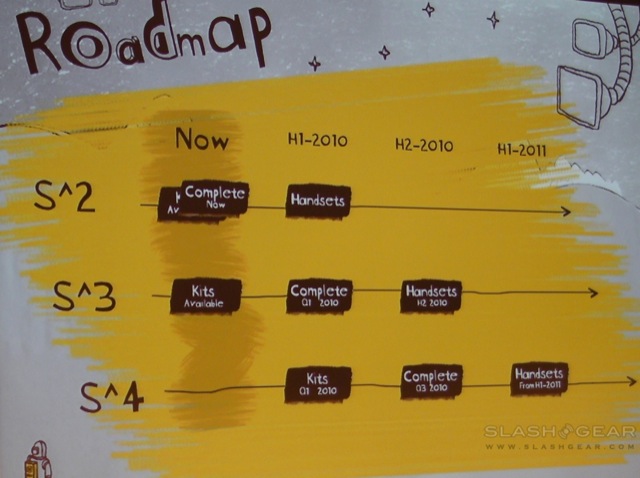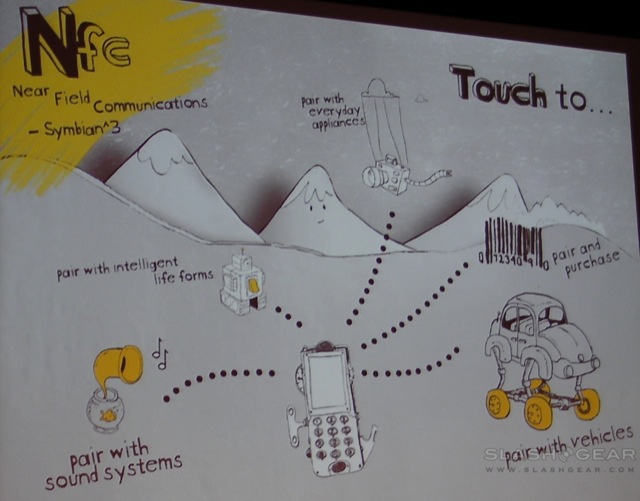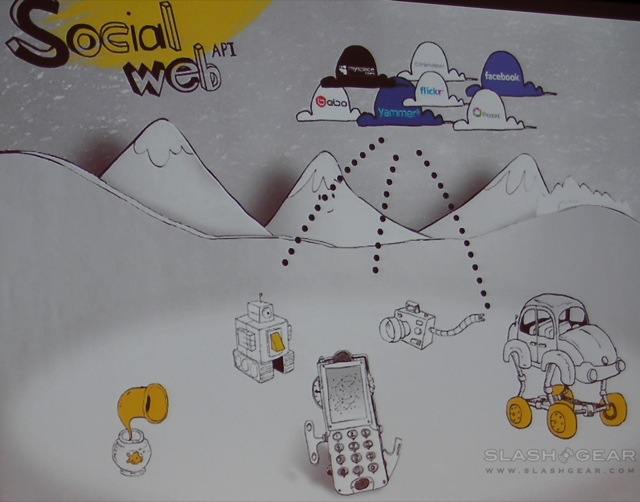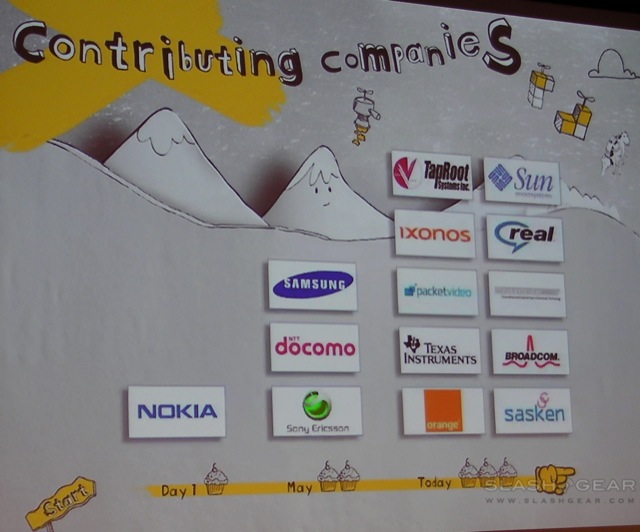Symbian Foundation Roadmap, NFC, Social Networking Hooks Discussed
Remember the BeagleBoard prototyping platform, which was put to such cost-effective use in the DIY Beagle MID earlier this year? Expect to see plenty more of the $149 OMAP3 device in future, now that Symbian Foundation have released their latest build for the platform. Speaking at Nokia's The Way We Live Next 3.0 conference today, Symbian Foundation's Shaun Puckrin discussed the roadmap for Symbian^3 and Symbian^4, the next-shipping versions of the platform, together with some of the functionality that will be hard-baked into the OS.
While there are currently 16 different packages of the current Symbian release available, together with an EPL release of the microkernel that, Puckrin expects, will see semiconductor firms proliferate low-cost chipsets for the platform, Symbian^3 is on course for completion in Q1 2010; handsets are expected to reach the market in the second half of next year. Meanwhile the Symbian^4 kits will begin to become available in Q1 2010, with the OS scheduled for completion in Q4 2010 and commercial availability of handsets in the first half of 2011.
Symbian^3 and ^4 will bring with them at least 466 new features from the Foundation team themselves; Puckrin also expects many more additions from the developer community itself. The Foundation expects to differentiate its offering from Google's Android by virtue of broader access to core aspects of the OS, together with a different open-source license which will require those modifying and tweaking the Symbian code to resubmit their changes and adaptations, a move Puckrin believes will prevent fragmentation.
Among the native functionality baked into Symbian^3 will be near-field communications, which will allow mobile devices to communicate wirelessly with in-car electronics, media systems and other handsets, together with a new social web API. Similar to Android 2.0's API "hooks", this will allow social networks such as LinkedIn, Facebook and Twitter to connect to core applications such as contacts and messaging, for aggregation of content and sharing profile photos and other information. The upcoming OS will also feature hardware graphics acceleration, potentially boosting video playback performance to hitherto unseen levels on mobile devices.
Rather than leave finding applications to chance – or to the occasionally clunky Ovi store, Symbian Foundation have developed Horizon, a combination application publishing system – which will push new code into the Ovi store for download – as well as act as a "yellow pages" for apps. Rather than replicate the Ovi functionality, Horizon will offer a full database of software from both large and small developers, as well as multiple links to the various places it's possible to download those apps from. There's also a suggestion site, ideas.symbian.org, where smartphone enthusiasts can suggest new features, vote for other suggestions, and the Foundation will attempt to connect developers and popular ideas for later inclusion in the core OS.
While we're inherently cautious about any platform purporting to be "The Future of Mobile", some of Symbian Foundation's approaches certainly seem to make more sense than rival OSes and the relatively tight grip they're held in by the manufacturers. More details on the Symbian port for BeagleBoard here; the device itself is available here.






